Things live in almost every corner of the Earth, defying the odds and seeking an existence. What is an extremophile? Seventeen amazing living things defying the odds on Earth will be covered below.
What is an Extremophile?
An extremophile is any organism that lives in highly inhospitable environments. Such places may have oppressive temperatures, extreme acidity or alkalinity, or any other dramatic condition that excludes almost all known life.
Most of these organisms are microorganisms called archaea. Archaea are single-celled microorganisms similar to bacteria, though they are distinct kinds of organisms. However, there are extremophiles from every kingdom, including large organisms like animals.
Extremophiles survive in strange environments like hot springs, the deep ocean, salt pools, or embedded deep in stone. There are a variety of extremophile types, including:
- Thermophiles: Organisms Living in Extremely High Temperatures.
- Psychrophiles: Organisms Living in Extremely Low Temperatures.
- Acidophiles: Organisms Living in Extreme Acidity.
- Alkaliphiles: Organisms Living in Extreme Alkalinity.
- Barophiles: Organisms Living in Extreme Pressure Environments.
- Halophiles: Organisms Reliant on High Salt Environments.
- Anaerobes: Organisms That Thrive Without Oxygen.
- Capnophiles: Organisms Living With Extreme Levels of Carbon Dioxide.
- Metallotolerants: Organisms Living With Extreme Levels of Heavy Metals.
- Osmophile: Organisms Living With Extreme Levels of Sugar.
- Radioresistants: Organisms Living With Extreme Radiation.
- Sulphophiles: Organisms Living With Extreme Levels of Sulfur.
- Polyextremophiles: Organisms Living in Two or More of the Above Extremes.
Let’s look closer at 17 extremophiles now.
1. Giant Tube Worms

Big invertebrates called giant tube worms inhabit the areas around hydrothermal vents.
©NOAA Okeanos Explorer Program, Galapagos Rift Expedition 2011, Public Domain, via Wikimedia Commons – Original / License
Giant tube worms (Riftia pachyptila) live in extreme ocean depths. They’re over six and a half feet long and live between 6200 and 11,8000 feet below sea level. Hydrothermal vents sustain them in isolated spots along the East Pacific Rise and near the Galapagos Islands.
These giant worms rely on gut bacteria to transform the sulfur pouring from hot seafloor vents into meaningful food. Yet despite living in such a unique environment, other extremophiles prey on giant tube worms. Their gills look like huge feathers, which they can retract quickly when attacked.
2. Hydrothermal Vent Crabs
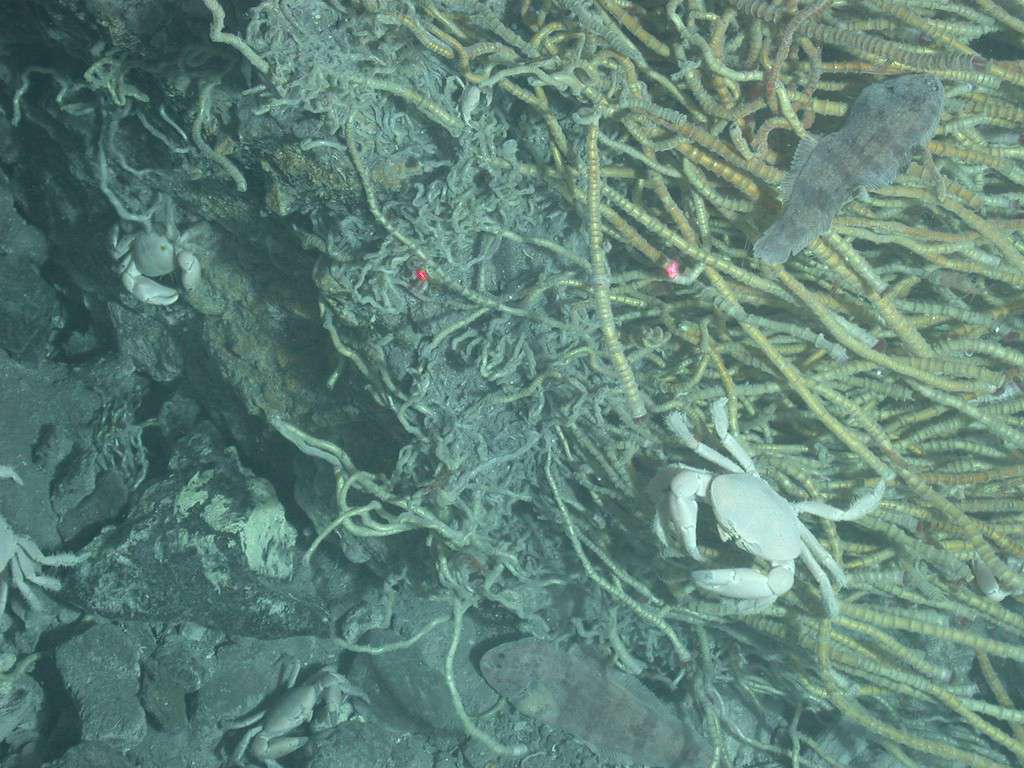
Sixteen species of blind crabs are known as hydrothermal crabs because they live near hydrothermal vents.
©Image Courtesy of Submarine Ring of Fire 2006 Exploration, NOAA Vents Program. 8 May 2006 – Source= http://www.flickr.com/photos/noaaphotolib/5015 – Original / License
Hydrothermal vent crabs encompass 16 different species of blind crabs that live near hydrothermal vents on the ocean floor. They probably eat other animals around the vents, like giant tube worms or bacteria.
These crabs endure extreme heat, high sulfides, and profound heavy metal concentrations. They also experience a hyper-acidic environment. While their lives are based around seafloor vents, they sometimes wander far away from the vent’s location.
3. Methanopyrus kandleri
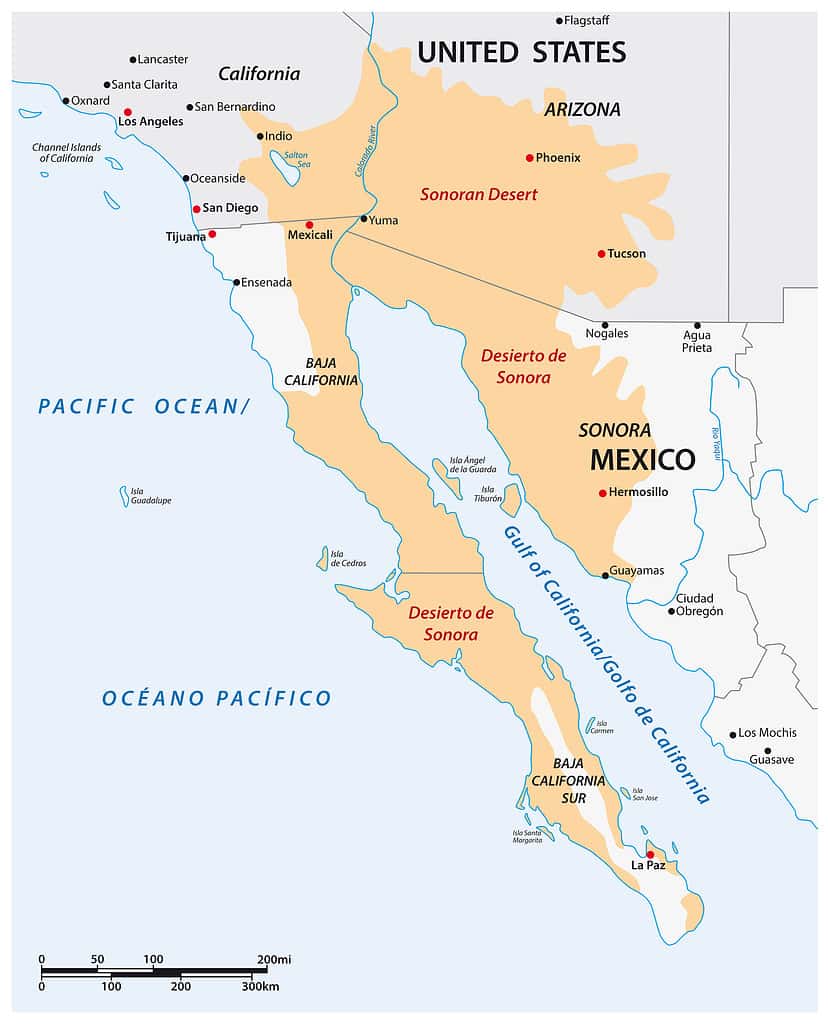
The archaean
Methanopyrus kandlerilives near hydrothermal vents in the Gulf of California.
©Rainer Lesniewski/iStock via Getty Images
Methanopyrus kandleri is a thermophile, which means it lives at extreme temperatures. This archaean is unique because it survives the highest temperature of any organism on Earth. It lives in environments up to 252 degrees Fahrenheit near hydrothermal vents on the ocean floor in the Gulf of California.
4. Picrophilus torridus
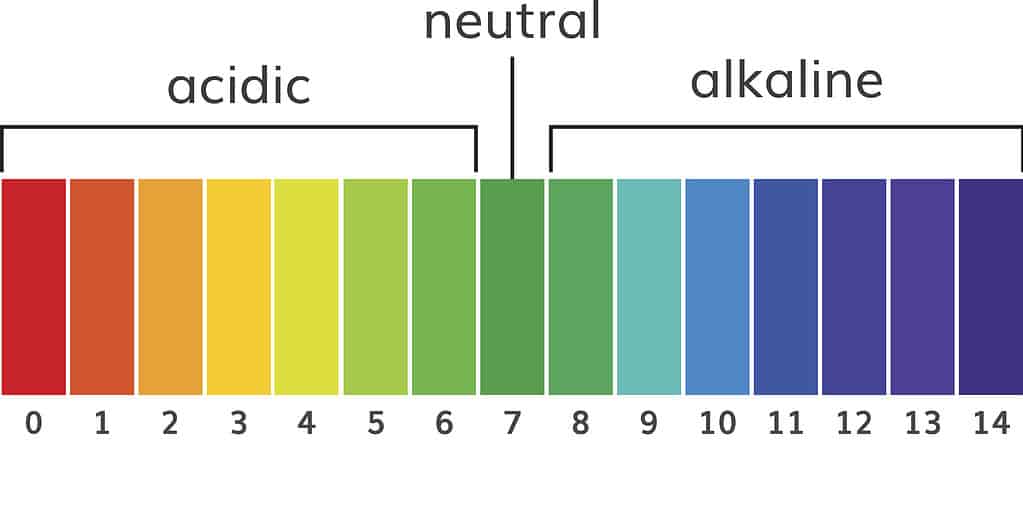
The archaean
Picrophilus torriduscan live in acidic environments with a pH of .05.
©Alexey Bezrodny/iStock via Getty Images
Picrophilus torridus is an acidophilic archaean that tolerates a pH as low as 0.05. This makes it the most acid-resistant organism on the planet.
This archaean lives in the dirt around a hot spring in Japan. This means that it also tolerates extremes in temperature.
5. Tardigrades

The Tardigrade is a polyextremophile that lives in different ecosystems around the world.
©Schokraie E, Warnken U, Hotz-Wagenblatt A, Grohme MA, Hengherr S, et al. (2012) / CC BY 2.5 – Original / License
Tardigrades are an animal with around 1300 species living in wildly varying environments worldwide. They exist in rainforests, coastal dunes, on top of mountains, in the deep sea, and around Antarctica. Most species eat lichens, moss, algae, or bacteria.
Tardigrades are polyextremophiles because they withstand a handful of hostile environmental conditions. They are invertebrate micro-animals and survive in extreme temperatures. They withstand extreme cold from just above Absolute Zero at around negative 521.6 degrees Fahrenheit to searing temperatures at about 303.8 degrees Fahrenheit.
These tiny animals can survive in a vacuum and environments of extreme pressure. They can also withstand exposure to gamma rays. Because they’re so resilient, they are survivors of all the mass extinctions on Earth.
While they earned a spot on our list of extremophiles, some scientists do not consider them true extremophiles. That’s because they only tolerate extremes and do not thrive in hostile environments.
6. Tersicoccus phoenicis

In two different clean rooms,
Tersicoccus phoenicissurvived sterilization.
©FroggyFrogg/iStock via Getty Images
Tersicoccus phoenicis is a scarce species of bacteria. It has only been discovered in 2 places on Earth. Remarkably, both locations are clean rooms kept as accessible as possible to particulates where spacecraft assembly occurs.
This bacteria species survived the intense cleaning processes of maintaining these clean rooms. The clean rooms were about 2500 miles apart, and their appearances were independent.
Since this bacteria is so resistant to removal, it’s a great candidate for study. If any craft from space brings back extraterrestrial bacteria, what scientists can learn from Tersicoccus phoenicis may be helpful.
7. Acidithiobacillus ferrooxidans
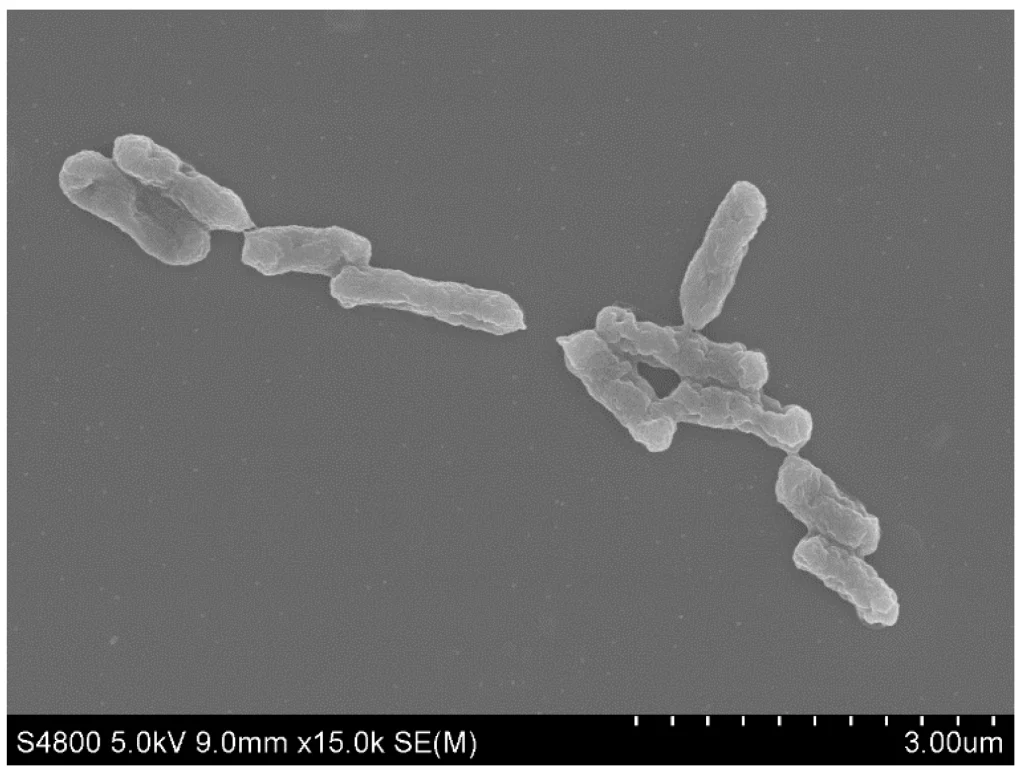
An acidophilic bacterium named
Acidithiobacillus ferrooxidansis used in mining to manage waste.
©Yu Zhang, Shuang Zhang, Dan Zhao, Yongqing Ni, Weidong Wang and Lei Yan, via Wikimedia Commons – https://www.mdpi.com/2076-2607/8/1/2 – Original / License
Acidithiobacillus ferrooxidans is an acidophilic bacteria usually found in mining drainages and dumps. These areas are typically contaminated with high levels of metals in a quantity that’s toxic for most other life.
This bacteria is valuable to the mining industry because it can turn waste metal into a product that turns into more usable metal after processing. It’s helpful in the recovery of copper, zinc, iron, and arsenic.
8. Pompeii Worms
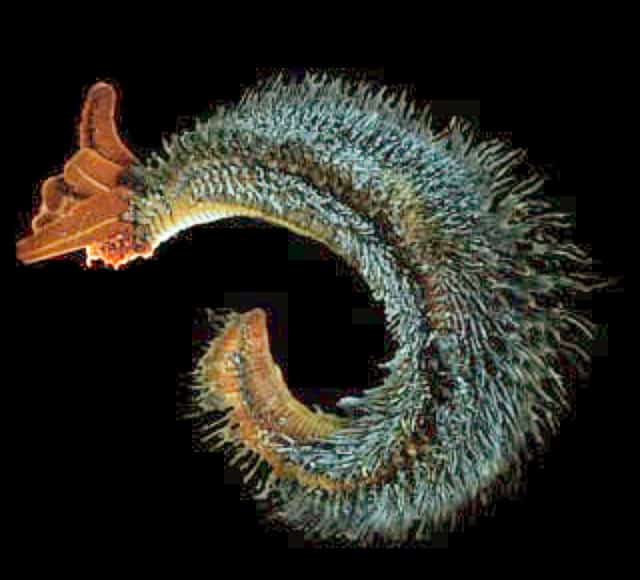
Hydrothermal vents deep in the Pacific Ocean host Pompeii worms.
©National Science Foundation (University of Delaware College of Marine Studies), Public domain, via Wikimedia Commons – 1 November 2001 – Original / License
Pompeii worms (Alvinella pompejana) live near hydrothermal vents deep in the Pacific Ocean. They can reach about 5 inches long and tolerate incredibly high heat.
They’re often found with their tail ends in water around 176 degrees Fahrenheit while their heads are in water around 72 degrees. This probably allows heat to dissipate through their heads to maintain an appropriate internal temperature.
These worms carry a particular bacterium on their back that looks like fleece. These bacteria are believed to convert the hydrothermal ejections into usable food.
9. Sulfur Mollys

A unique small fish called sulfur mollys lives in a bleak cave system in Mexico.
©Juliane Lukas, CC BY-SA 4.0, via Wikimedia Commons – 22 December 2021 – https://www.eurekalert.org/multimedia/902190 – Original / License
Sulfur mollys (Poecilia sulphuraria) are an endemic species in southern Mexico that inhabits a sulfuric and heated spring system. They call the Cueva del Azufre home and survive in waters with toxic levels of sulfides and almost no light. During the dry season, when the waters are shallow in oxygen, these fish survive water temperatures up to 109 degrees Fahrenheit.
The Cueva del Azufre system is an extensive cave system with different chambers. Each of these chambers presents a foreign environment to the mollys in residence.
As a result, different populations within separate chambers are starting to become genetically distinct from the others. Eventually, there will be multiple kinds of sulfur mollys throughout the cave.
10. Deinococcus radiodurans
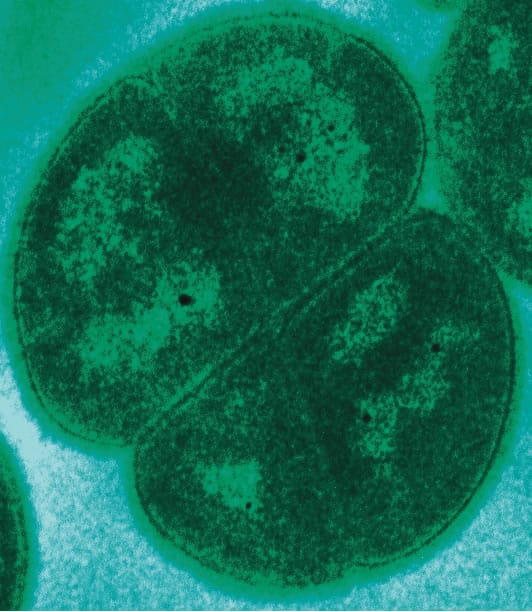
The bacterium
Deinococcus radioduransis the most radiation-tolerant organism on Earth.
©Credit: TEM of D. radiodurans acquired in the laboratory of Michael Daly, Uniformed Services University, Bethesda, MD, USA. http://www.usuhs.mil/pat/deinococcus/index_20.htm, Public domain, via Wikimedia Commons – Original / License
Deinococcus radiodurans is a polyextremophile and one of the most radiation-tolerant organisms on Earth. Not only does it tolerate extreme radiation, but it also survives in massively dry, cold, and acidic environments.
This species was discovered by scientists experimenting with radiation to prevent food spoilage. After subjecting canned meat to supposedly lethal levels of gamma radiation, it still went wrong. Dienococcus radiodurans was to blame. Since then, scientists on the International Space Station have shown that these bacteria can survive for three years in space.
11. Pseudocandona movilaensis

The Movile Cave in Romania hosts
Pseudocandona movilaensis,which tolerates ammonium and methane.
©vchal/iStock via Getty Images
Pseudocandona movilaensis is a small crustacean found in the Movile Cave in Romania. The cave water it lives in is about 70 degrees Fahrenheit and contains high concentrations of ammonium, sulfides, and methane. These animals evolved explicitly to survive this hostile environment.
Initially, the Movile Cave, where these crustaceans lived, was inaccessible to the outside world. As a result, there is no energy input from the planet’s surface. All energy driving the ecosystem in the cave comes from an aquifer.
12. San Francisco Brine Shrimp

The San Francisco brine shrimp has cysts resistant to radiation and temperature extremes.
©Rudy Mareel/Shutterstock.com
San Francisco brine shrimp (Artemia franciscana) withstand hypersalinity. They call the San Francisco Bay home. They also live elsewhere on the California coast and in Utah’s Great Salt Lake.
Their cysts, or eggs, resist UV radiation and temperature extremes without oxygen. That’s because the eggs have protective shells that protect the contents from environmental damage, though the exact way this works isn’t fully understood.
Their eggs can withstand extreme drying because they have no measurable water content. They can also withstand temperatures over 200 degrees Fahrenheit without dramatically affecting their hatching rate. However, highly dried eggs can only withstand extreme heat for a few hours before hatching rates significantly decrease.
Since their eggs are so durable, they are a popular commercial product. They ship well, are really easy to breed, and are used in various applications. For example, they’re a popular pet food used around the world.
13. Sea Monkeys

The cheap aquarium pets known as sea monkeys originate from hypersaline ecosystems.
©iStock.com/Credit:S.Rohrlach
Sea monkeys (Artemia salina) are an extremophile similar to San Francisco brine shrimp as they are closely related. Sea monkeys are initially from hypersaline environments in the Mediterranean. They make their homes in ponds, saline lakes, and other temporary water pooling locations.
Sea monkeys are famous as a cheap aquarium pet. Since their cysts are easy to transport, they’re sold as a novelty that can be hatched and kept for amusement. With minimal care, sea monkeys live for about two years.
14. Geobacillus stearothermophil
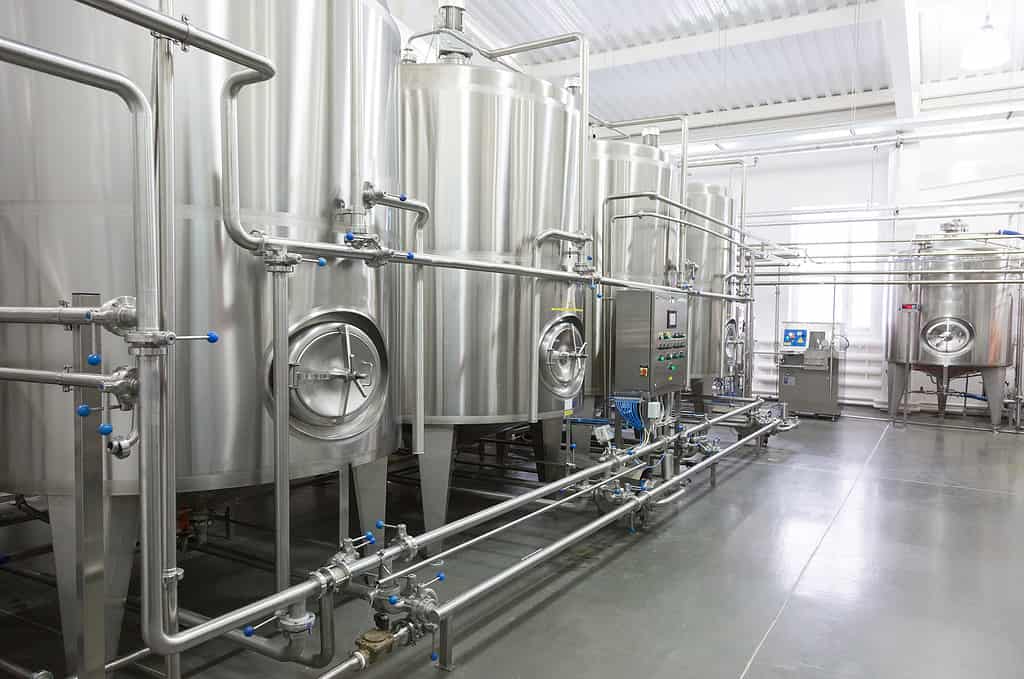
The bacterium
Geobacillus stearothermophilis used to test stainless steel in dairy production.
©Lenorlux/iStock via Getty Images
Geobacillus stearothermophil is a thermophilic bacterium that lives in many places, including ocean sediments, soil, and hot springs. It grows in temperatures between 86 degrees and 158 degrees Fahrenheit.
This organism is used to verify sterilization since it grows in many environments and also plays a part in food spoilage. It’s beneficial when proving the sterility of stainless steel in dairy production.
15. Cryomyces antarcticus
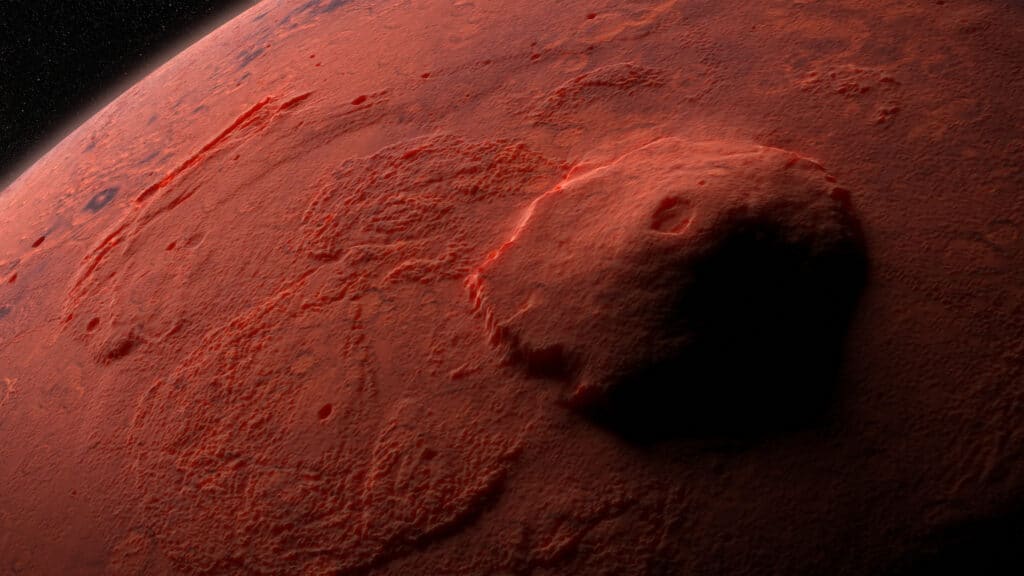
The Antarctic fungus
Cryomyces antarcticussurvives conditions emulating the surface of Mars.
©Dotted Yeti/Shutterstock.com
Cryomyces antarcticus is a fungus and one of the few lifeforms living in Antarctica’s McMurdo Dry Valleys. This area of Antarctica is the coldest and driest desert on Earth.
C. antarcticus lives in sandstone at Linnaeus Terrace and possibly other locales. It’s a black fungus that manages to survive inside the pores of rocks.
This fungus was discovered in 2005, and it’s since been experimented on in outer space. It’s believed that the melanin in the cell walls of this fungus protects it from extreme radiation. Scientists subjected it to conditions emulating the surface of Mars, and it survived.
16. Antarctic Nematodes
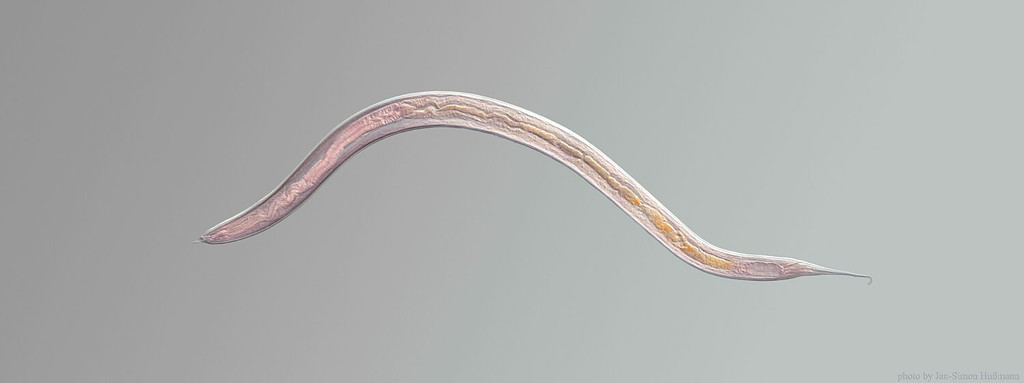
Some nematodes like the one above undergo intracellular freezing to survive in Antarctica.
©Hussmann/Shutterstock.com
Antarctic nematodes (Panagrolaimus davidi) are tiny ringworms that withstand frigid temperatures. They’re so tolerant of prohibitively cold conditions that they can survive intracellular freezing. This allows them to sit in permafrost almost indefinitely for the proper environmental conditions needed for a productive life.
17. Spirulina

Spirulina is an extremophile microalgae superfood.
©pilipphoto/iStock via Getty Images
Arthrospira platensis, also called Spirulina, is an alkaliphilic microalgae that can be cultivated on nonarable ground with seawater. Because it can be grown with few resources and is a nutritional powerhouse, it may be a good choice when considering producing sustainable food for the future. Microalgae of this type can also be used in cosmetics, supplements, and other consumer products.
The photo featured at the top of this post is © Evgenii Mitroshin/iStock via Getty Images
Thank you for reading! Have some feedback for us? Contact the AZ Animals editorial team.







